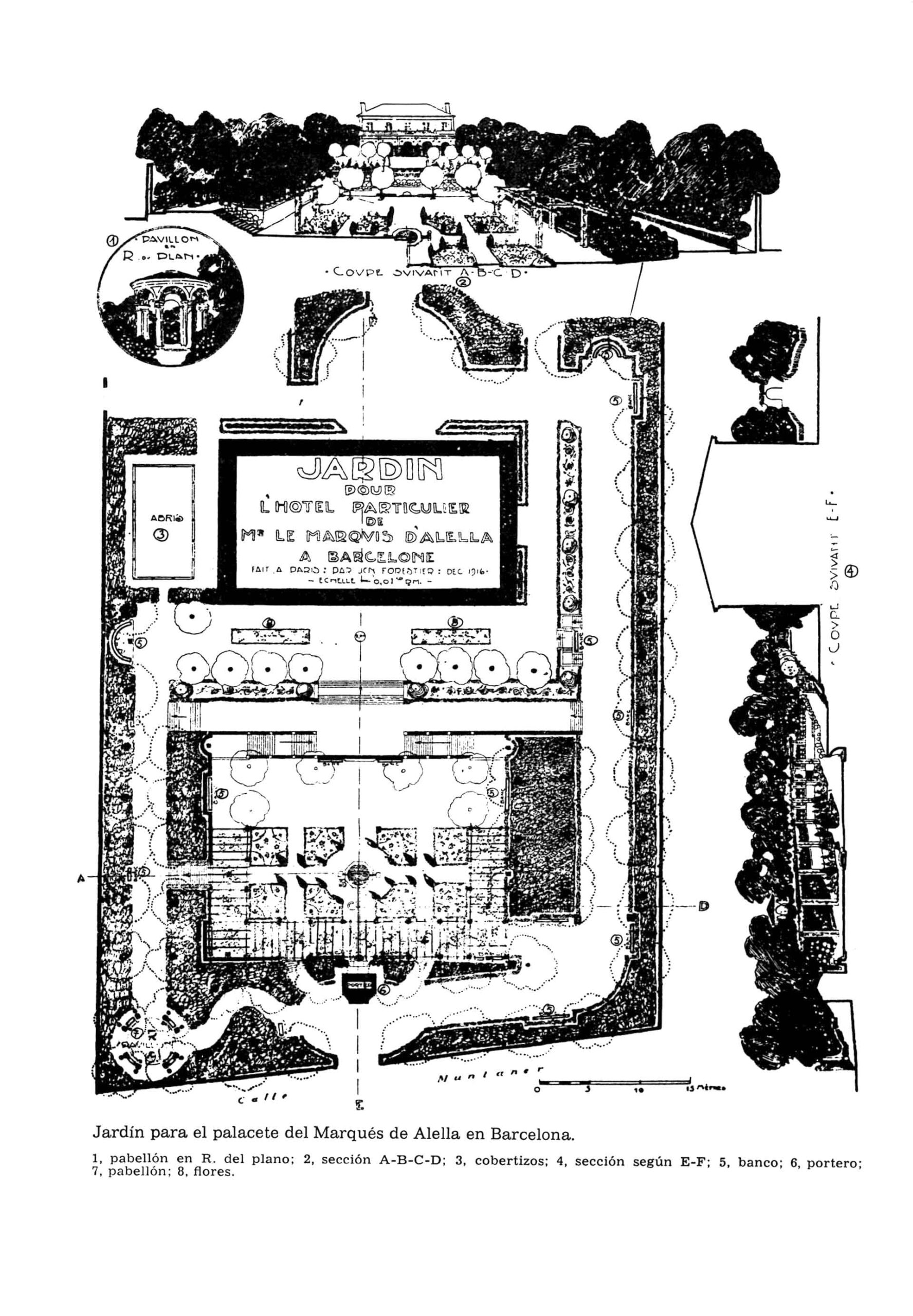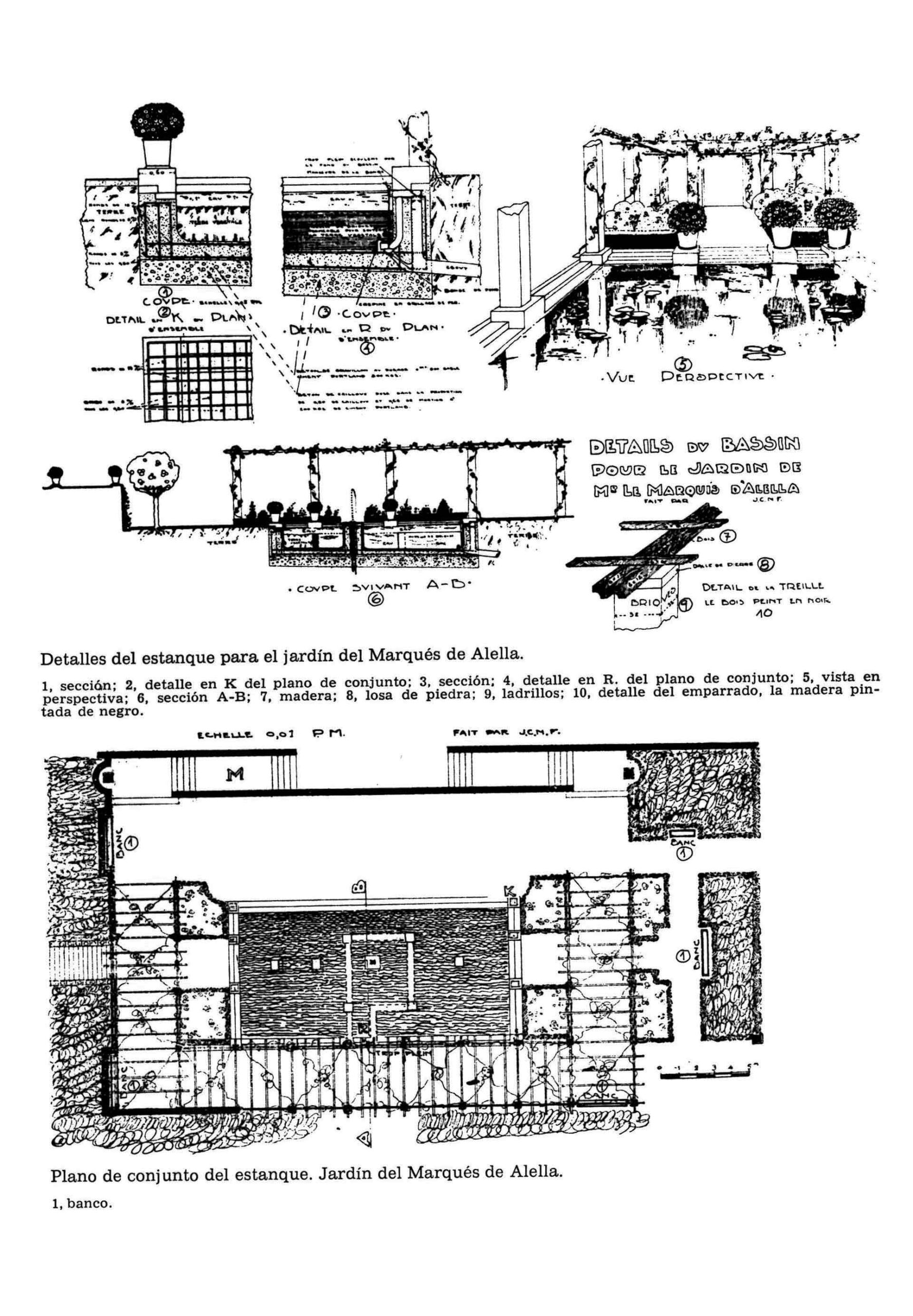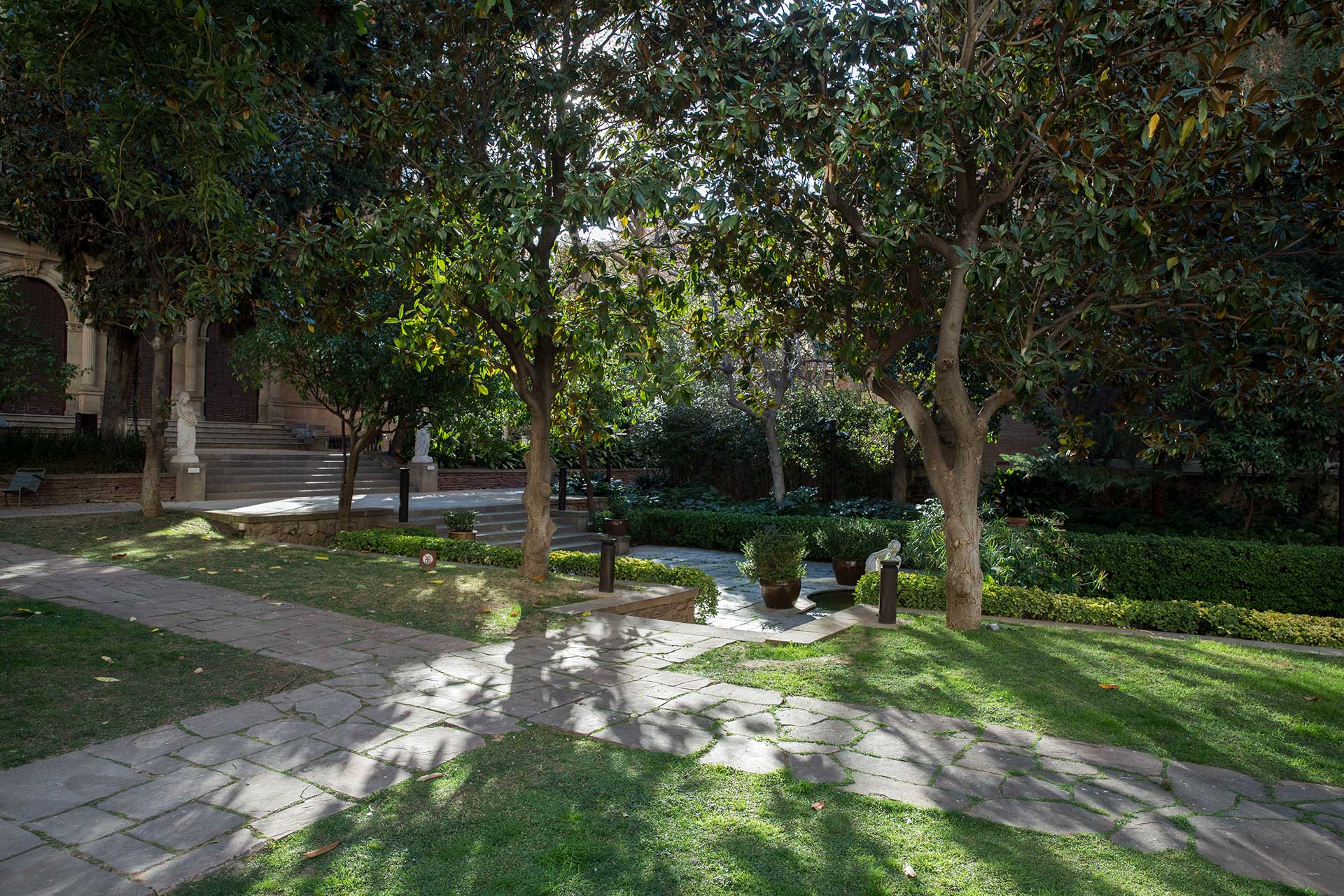The garden
Forestier’s original design
The original design for the garden was a project commissioned by Ferran Fabra i Puig, the second Marquis of Alella and the first owner of the property, and carried out by Jean-Claude Nicolas Forestier (1861–1930), the custodian of Paris’s parks and one of the most renowned international landscape gardeners of the time.
Forestier landscaped part of Montjuïc mountain for the 1929 International Exposition, thus bringing the concept of the Mediterranean garden to Barcelona.
Forestier likely presented more than one proposal, because the project that was eventually executed does not coincide with the plans published in 1916 in the magazine Jardins: Carnet de plans et de dessins, under the title ‘Jardins pour l’Hôtel particulier de Mr le Marquis d’Alella à Barcelone’.
The chosen solution was to create a space divided into three terraces. On the main one, there was a central rectangular pond with a fountain and decorative terracotta pots around the perimeter. The garden was finished off with three U-shaped pergolas with rosebushes and a flowerbed in front of the Torre de l’Avenir.
Mirambell’s reorganisation
In the 1950s – probably between 1956 and 1957 – Muñoz Ramonet assigned the task of renovating the garden to Joan Mirambell i Ferran (1892–1983), who gave it the appearance it still has today. Mirambell made significant changes to the front structure, creating a combination of different terraces to bring the level of the garden closer to the building and to raise the sides, as well as changing the orientation of the pond and the pergola and installing sculptures by Josep Dunyach i Sala (1886–1957) and Josep Cañas i Cañas (1905–2001) in different places.
In the garden in front of the house on Carrer de l’Avenir, he replaced the flowerbed created by Forestier with a bathing area, surrounded by columns, a pergola and pedestals with bronze sculptures by Josep Dunyach and Vicenç Navarro Romero (1888–1979). He also changed the type of plants, introducing a grass lawn and magnolias, sago palms and palm trees.
Renovations
Once the property was recovered and before it was opened to the public in 2015, the Foundation carried out various renovations on the garden in order to revive the spirit of Forestier’s project while respecting Mirambell’s level changes around the fountain
LThe main project consisted of pruning, preserving and removing plants in poor condition, recovering and maintaining some iconic trees like the Montpellier maple and the European nettle tree, and planting new plants. In addition, the swimming pool was replaced by a pond, the landscaping was improved and the paths around the garden were made accessible.
More recently, the watering lines and lighting system have been renovated and the perimeter wall, fences and entrances on Carrer de Muntaner, Carrer de Marià Cubí and Carrer de l’Avenir have been restored.
A protected ecosystem
The different plant species growing in the garden include laurel bushes, romantic white wisteria, Freeman maple, bush lilies, aspidistras, agapanthus – deriving from the Greek for ‘love’ and ‘flower’ – laurel-leaved snail trees, avocados, acanthus or bear’s breeches, magnolias and Japanese cherry trees.
Given that the garden is isolated from street noise and sheltered by its walls, birds can be heard like the western Bonelli’s warbler, the unusual, funny crested tit and the Eurasian magpie.




